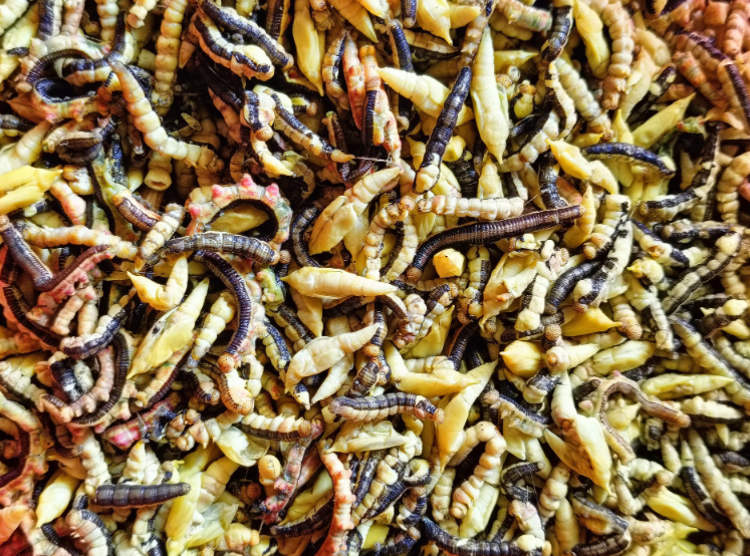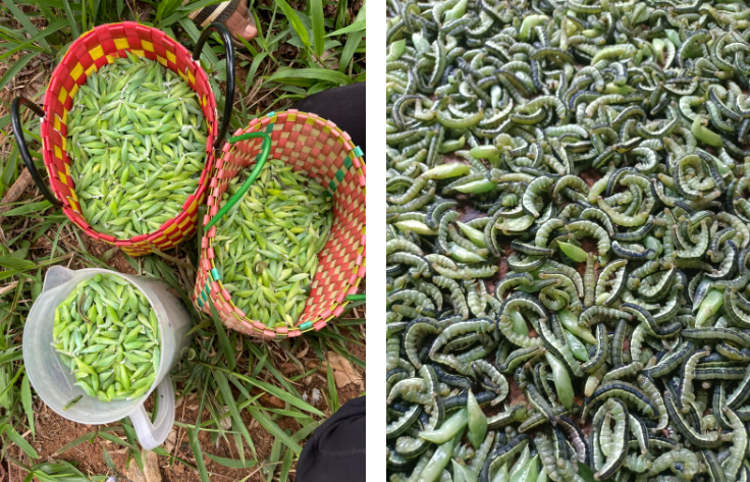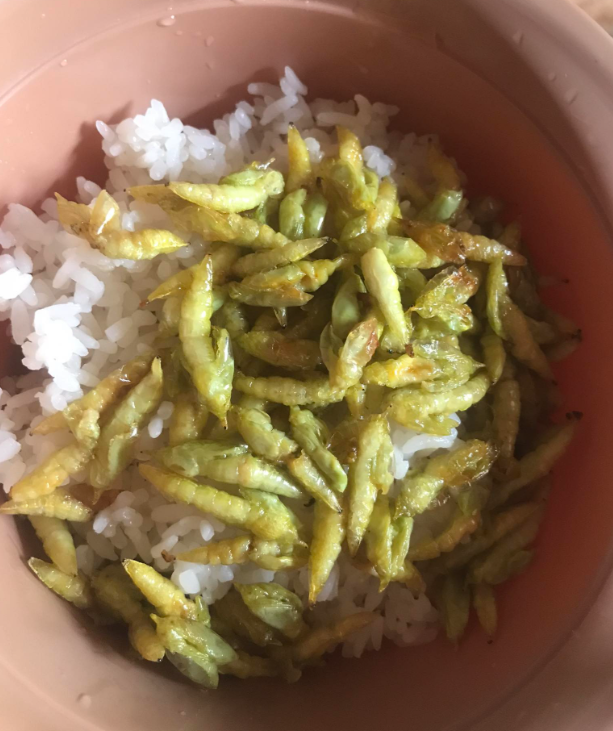Caterpillars aren’t the most appetizing meal for humans, but for the people of Vietnam’s Central Highlands, they are the main ingredient of a regional stir-fried dish.
Every year, in the months of March and April, cassia trees in the central highlands of Vietnam are invaded by an army of yellowish caterpillars that love nothing more than to feed on their leaves. Once fully developed, the larvae leave the tree tops and crawl down the leaves to form cocoons, before turning into butterflies and flying away. But before this final transformation occurs, cassia caterpillar gatherers pick the caterpillars and pupae one by one to use in a simple stir-fried dish that can be a little hard to stomach.

Once collected, the larvae are kept alive for 4-6 hours to allow them to naturally purge their digestive tracts. They are then thoroughly rinsed, blanched in boiling water, seasoned with salt and pepper, and cooked. Although some preferred them grilled, or pan fried with animal fat, the most popular way of cooking these critters is to stir fry them.
Once cleaned, the larvae and pupae are tossed into a hot pan with lard, sautéed with minced garlic and onions, and seasoned to taste. When nearly done, finely chopped lime leaves are added for extra flavor. The finished dish has a golden, crispy exterior and a delicious flavor. The texture is crunchy on the outside and creamy inside, somewhat similar to silkworm pupae but more flavorful and less greasy.

Because of the short yearly season, cassia caterpillars and pupae fetch a decent price, around VND 200,000 – 250,000 per kilogram ($8 – $10) in Vietnam’s Central Highlands, and even higher in other provinces, VND 350,000 – 400,000 per kilogram ($14 – $16), rivaling seafood prices.
Though tasty, with a rich, nutty flavor and crisp texture, the unconventional dish has been known to cause itchiness similar to that of an allergy in some people.

For more weird foods, check out Yin and Yang Fish, the hair-like Fa Cai, and Godzilla Ramen.


0 Comments